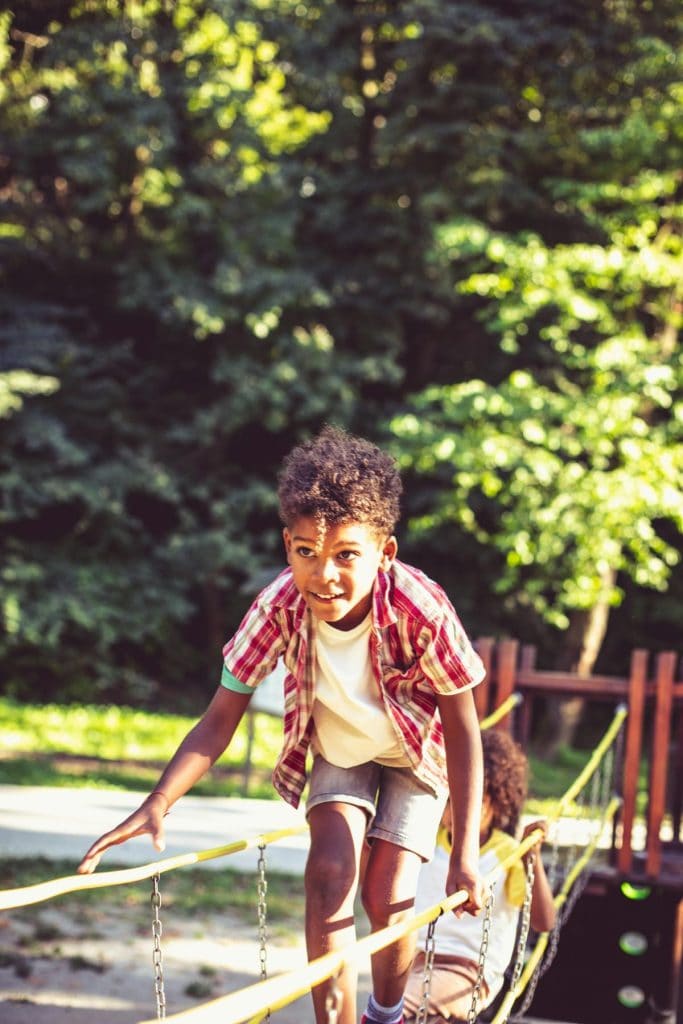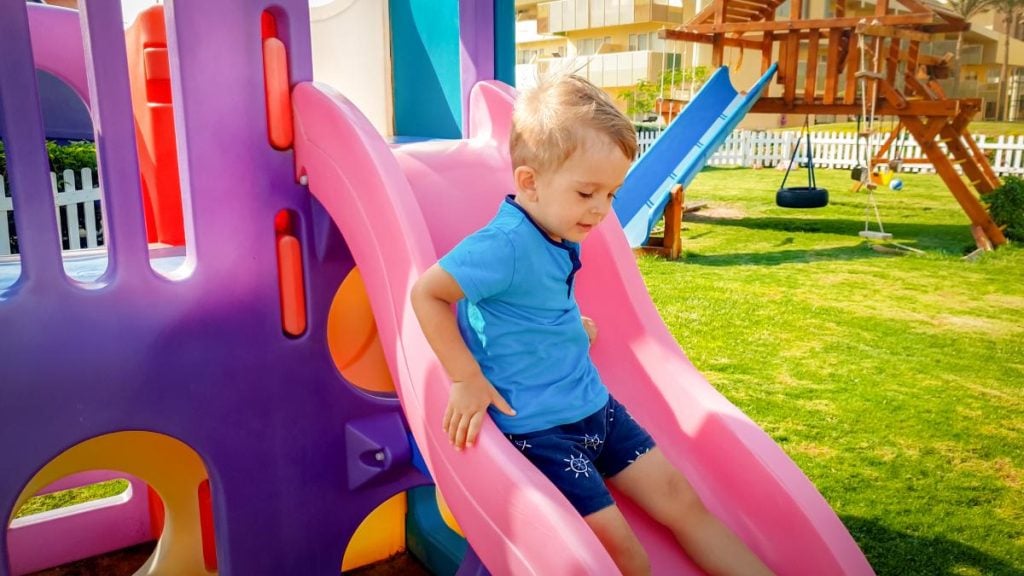As parents, we all know the joy of watching our children play outdoors, their laughter echoing as they swing, climb, and slide. Outdoor play is crucial for a child’s physical development, social skills, and overall well-being. However, with this fun comes the responsibility of ensuring their safety.
Let’s explore six effective ways to make your child’s outdoor play equipment more secure, giving you peace of mind while they enjoy their backyard adventures.

1. Regular Inspection and Maintenance
The first step in play equipment safety is establishing a routine for inspection and maintenance. Daily visual checks can catch immediate issues, while weekly thorough inspections allow you to address potential problems before they become hazards.
During your daily walk-around, look for obvious signs of damage or wear. Check for loose bolts, splintered wood, or rust on metal parts. Weekly, take a closer look at the structure’s integrity. Examine joints, connections, and weight-bearing elements. Pay special attention to swings, slides, and other moving parts.
Remember, small issues can quickly become big problems. That slightly loose bolt might seem minor today, but it could lead to a dangerous situation tomorrow.
2. Proper Installation and Anchoring
The security of play equipment starts with its installation. Always follow the manufacturer’s guidelines meticulously. These instructions are designed with safety in mind and often account for factors you might not have considered.
One critical aspect of installation is anchoring. For equipment placed on concrete, using galvanized wedge anchors provides a secure foundation that resists movement and tipping. These anchors are resistant to corrosion and offer excellent holding power, making them ideal for outdoor use.
If your play set is on soil or grass, consider using ground anchors or concrete footings. The goal is to ensure the equipment remains stable under active play and various weather conditions. Remember, a wobbly structure is an accident waiting to happen.
3. Creating Safe Fall Zones
Children fall – it’s an inevitable part of play and learning. Your job is to make sure these falls are as safe as possible. This is where fall zones come into play.
Start by installing appropriate surfacing materials around your play equipment. Options include wood chips, rubber mulch, or specially designed rubber mats. These materials absorb impact, reducing the risk of serious injury from falls.
For loose-fill materials like wood chips or mulch, maintain a depth of at least 9 inches for play equipment up to 7 feet high. Regularly check and replenish these materials as they can compact or disperse over time.
Extend your fall zones at least 6 feet beyond the equipment’s boundaries in all directions. For swings, the fall zone should extend twice the height of the swing’s suspending bar in both front and back.
4. Secure Moving Parts
Moving parts on play equipment, such as swings and seesaws, require extra attention. These components experience the most wear and are often involved in play-related accidents.
Start by regularly checking and tightening all bolts and screws. Loose connections can lead to wobbly structures or even parts detaching during use. Pay special attention to S-hooks on swings, ensuring they’re closed tightly to prevent chains from slipping off.
Lubricate moving components like swing hangers and rotating platforms. This not only ensures smooth operation but also prevents premature wear. Use a silicone-based lubricant that won’t attract dirt or grime.
Be proactive about replacing worn or damaged parts. A frayed rope, a cracked swing seat, or a rusted chain might seem minor, but they can lead to accidents. When in doubt, replace it – your child’s safety is worth far more than the cost of a new part.

5. Weather-Proofing Equipment
Weather can be tough on outdoor play equipment. Sun, rain, snow, and temperature fluctuations all take their toll, potentially compromising the structure’s integrity and safety.
Apply protective coatings to wooden parts to prevent splintering and rot. For metal components, use rust-resistant paint or sealants to prevent corrosion. These protective measures not only extend the life of your equipment but also maintain its structural integrity.
Consider covering your play equipment during harsh weather conditions. A weatherproof tarp can protect against heavy rain, snow, and intense sun exposure. This is particularly important for wooden structures and equipment with fabric or rope elements.
Regularly inspect for and address any signs of weather damage. Look for warped wood, rusted metal, or degraded plastic. Catching these issues early can prevent more serious problems down the line.
6. Childproofing Potential Hazards
Even well-designed play equipment can have potential hazards that need addressing. A little childproofing can go a long way in preventing accidents.
Start by capping exposed bolts and covering sharp edges. You can find plastic caps designed for this purpose at most hardware stores. For wooden structures, sand down any rough spots or splinters.
Install protective barriers or guardrails on elevated platforms to prevent falls. The general rule is to have barriers on any platform higher than 30 inches off the ground.
Examine your equipment for potential entrapment hazards. Look for openings between 3.5 and 9 inches – these can trap a child’s head or limbs. Pay special attention to the spaces between ladder rungs, guardrails, and around slide entries.

Empowering Safe Exploration
Remember, safety is an ongoing process. Keep your eyes open and address issues promptly. With these measures in place, you can relax and enjoy watching your children play, knowing you’ve done your best to create a secure environment for their outdoor adventures.
After all, there’s nothing quite like the sound of children’s laughter ringing out from a backyard playground – especially when you know they’re playing safely.
